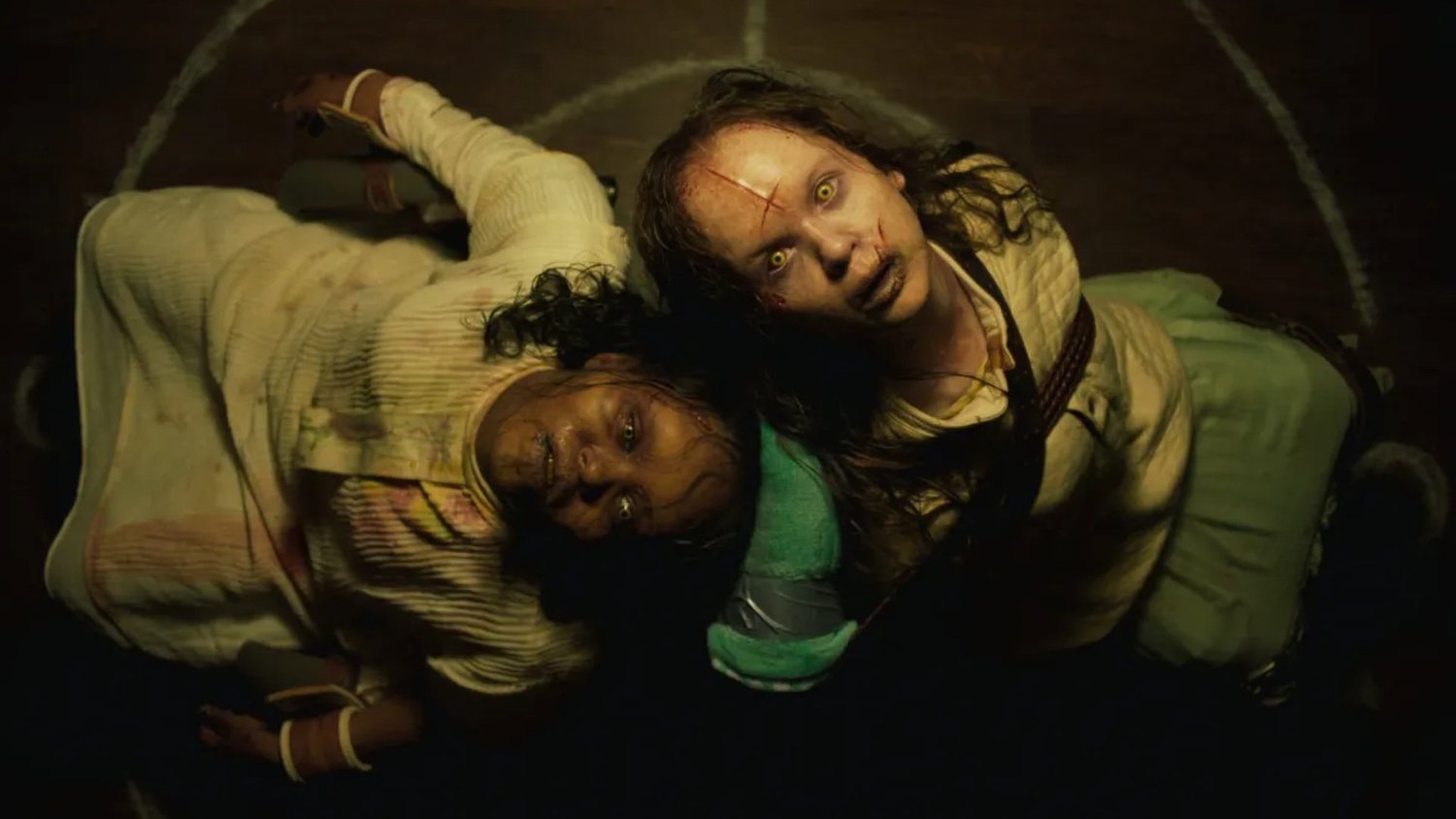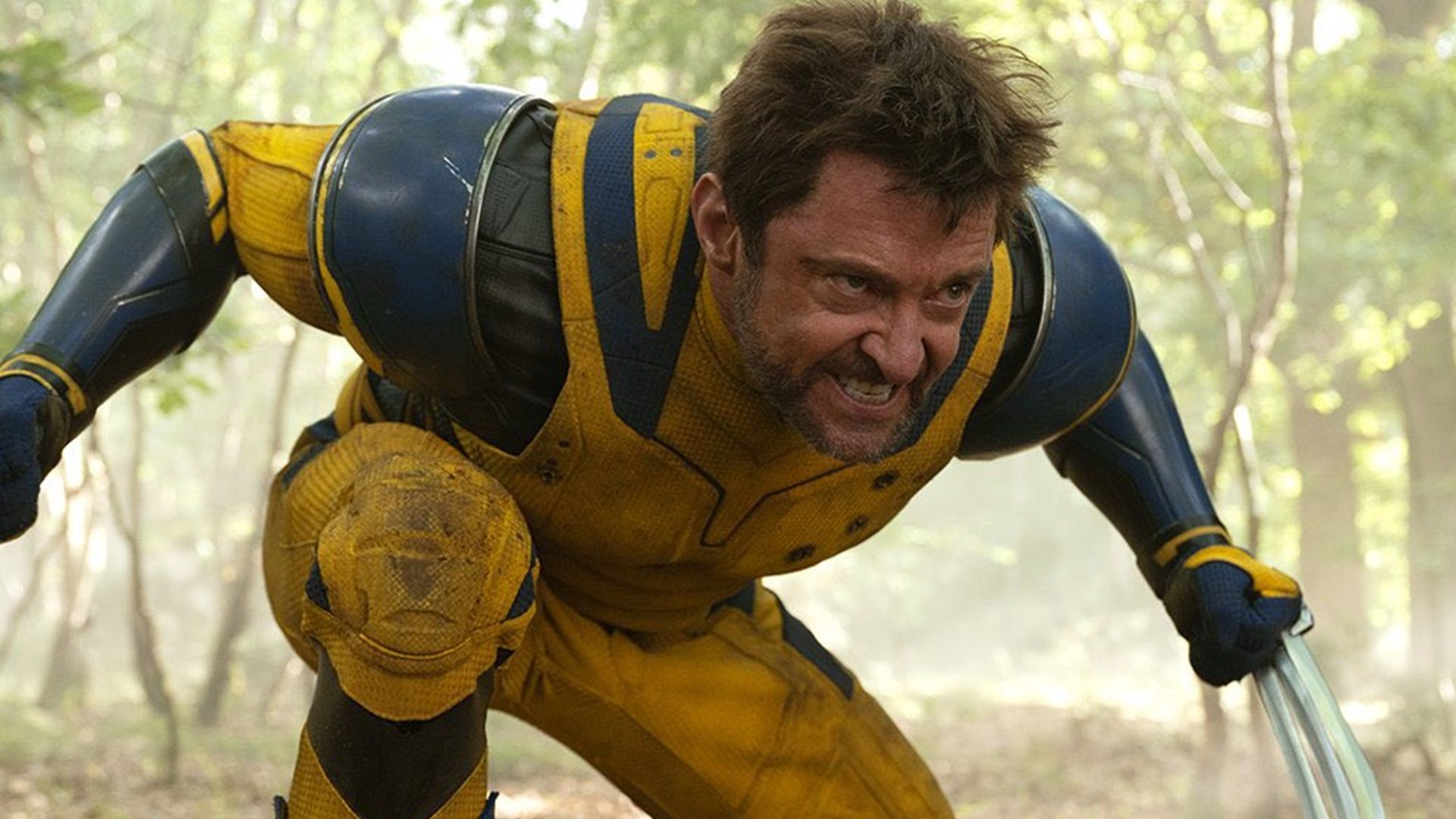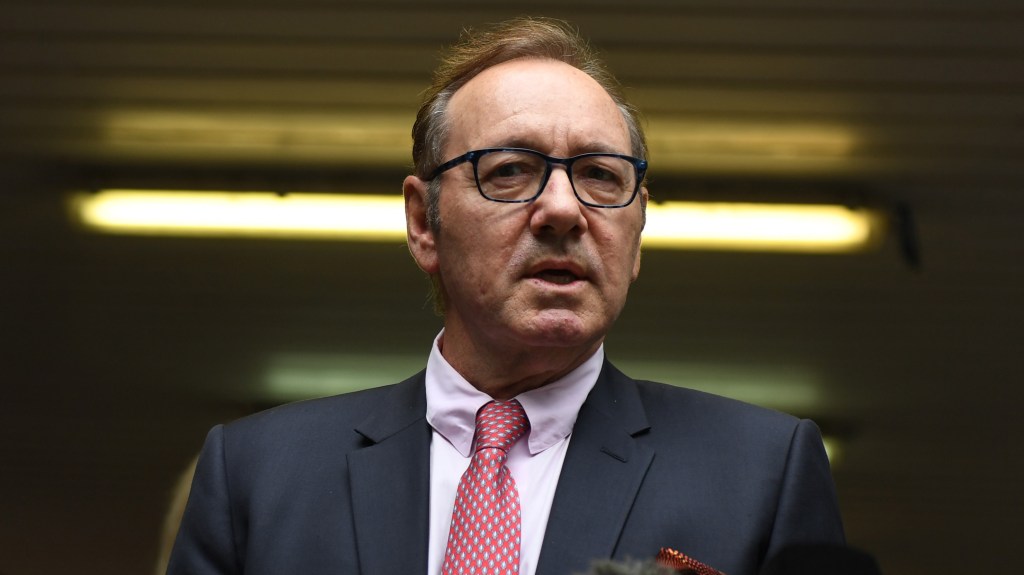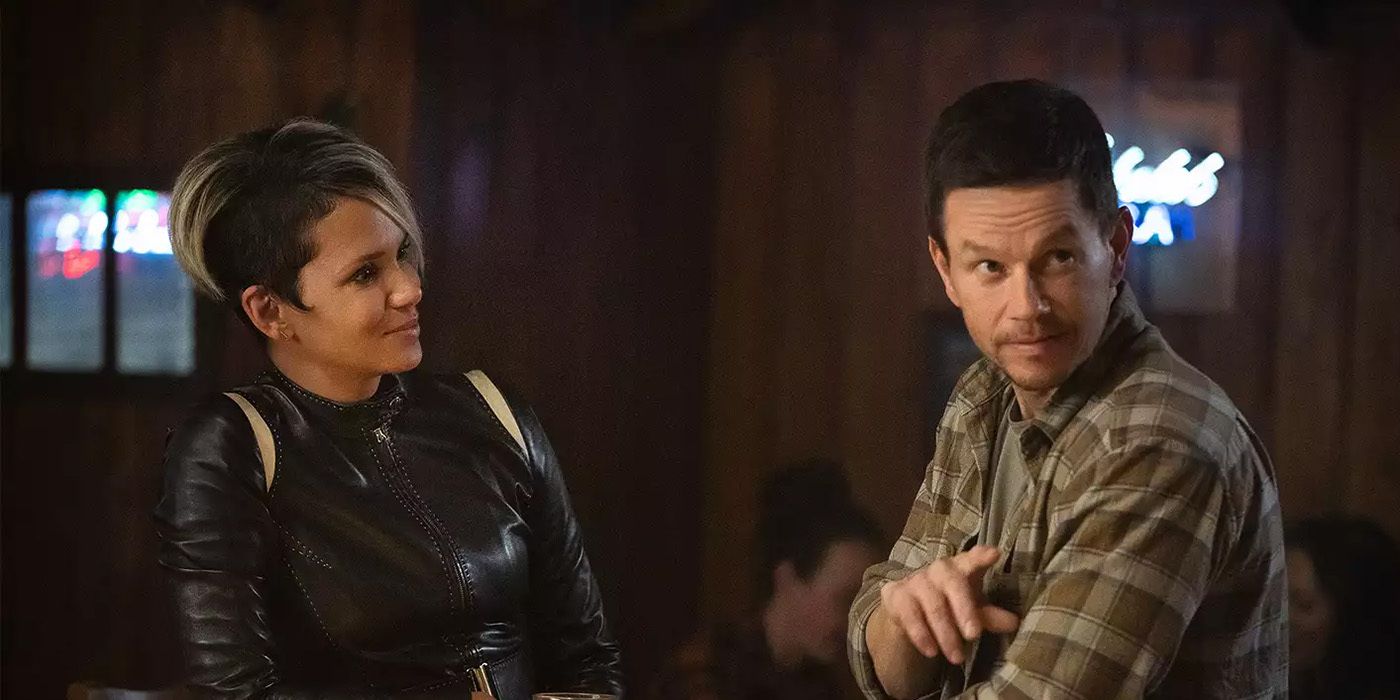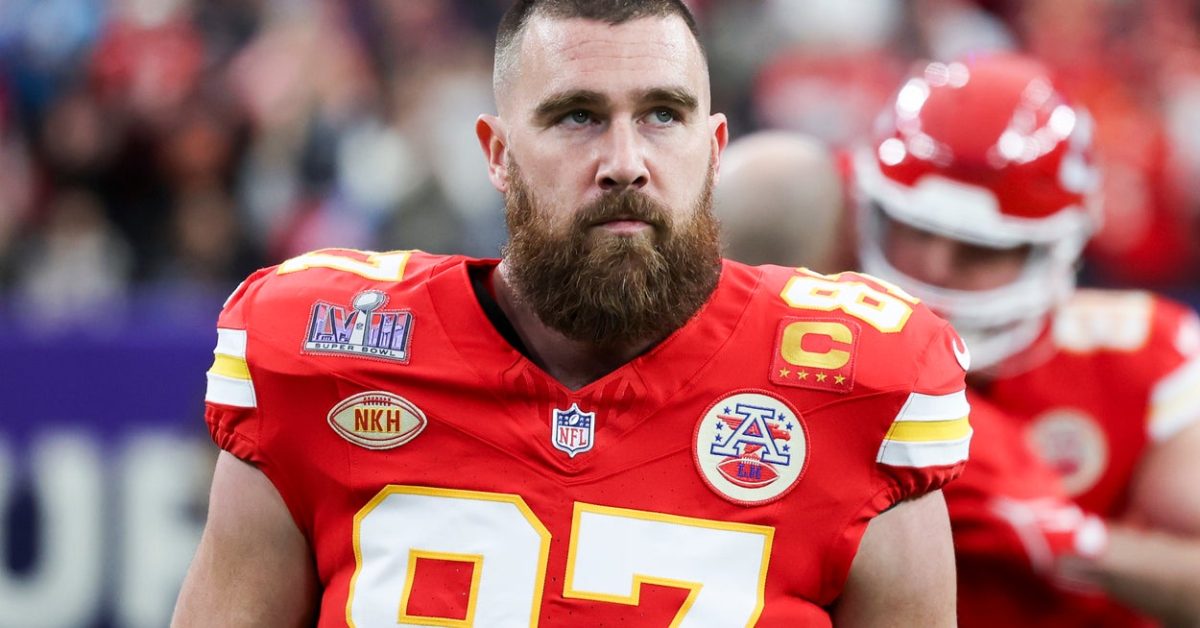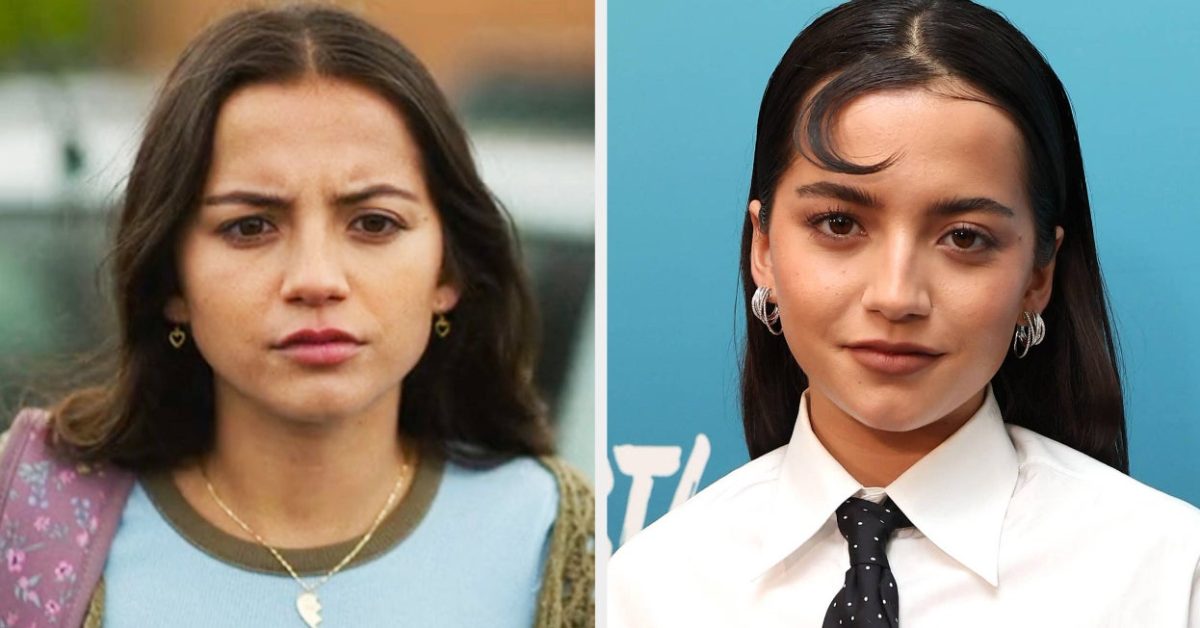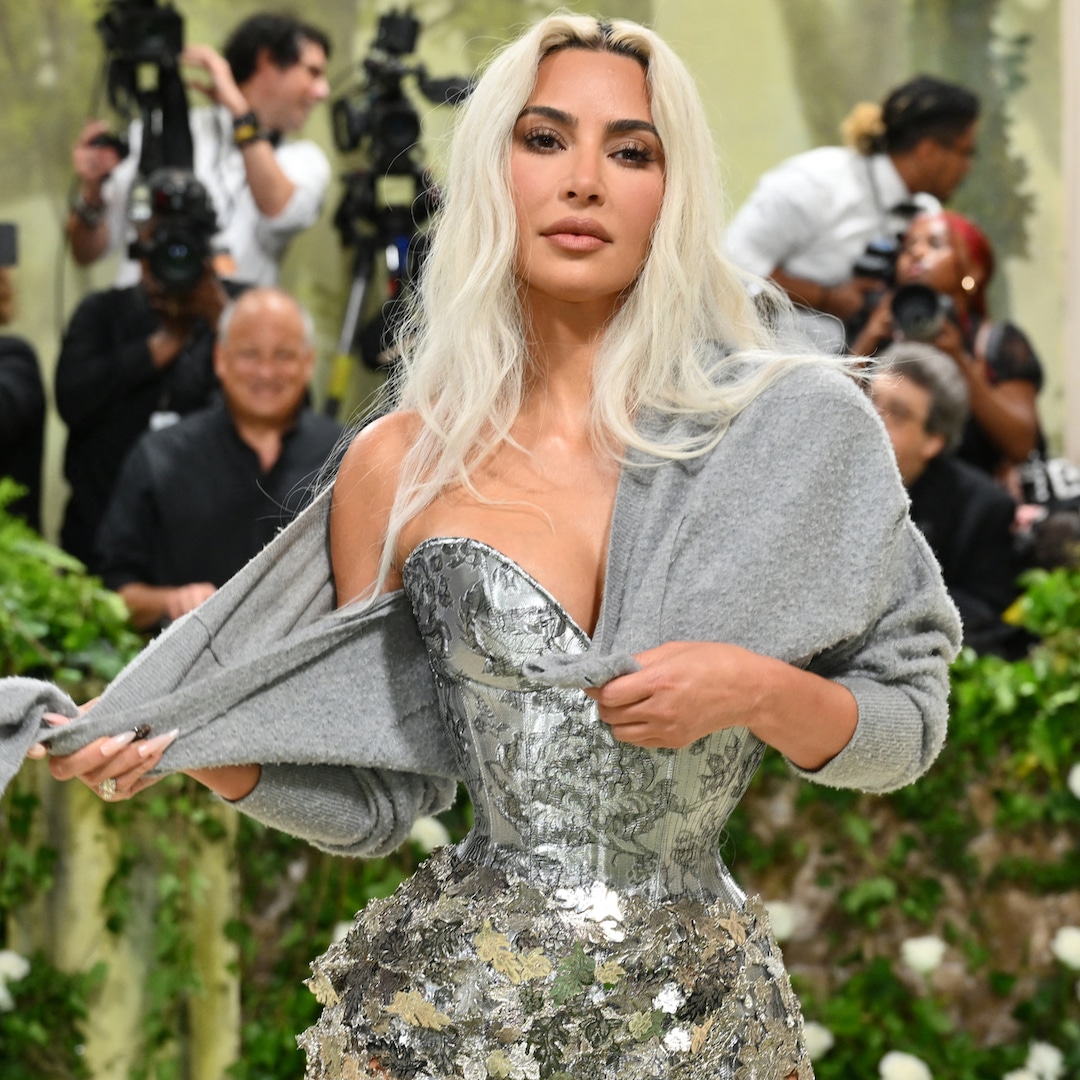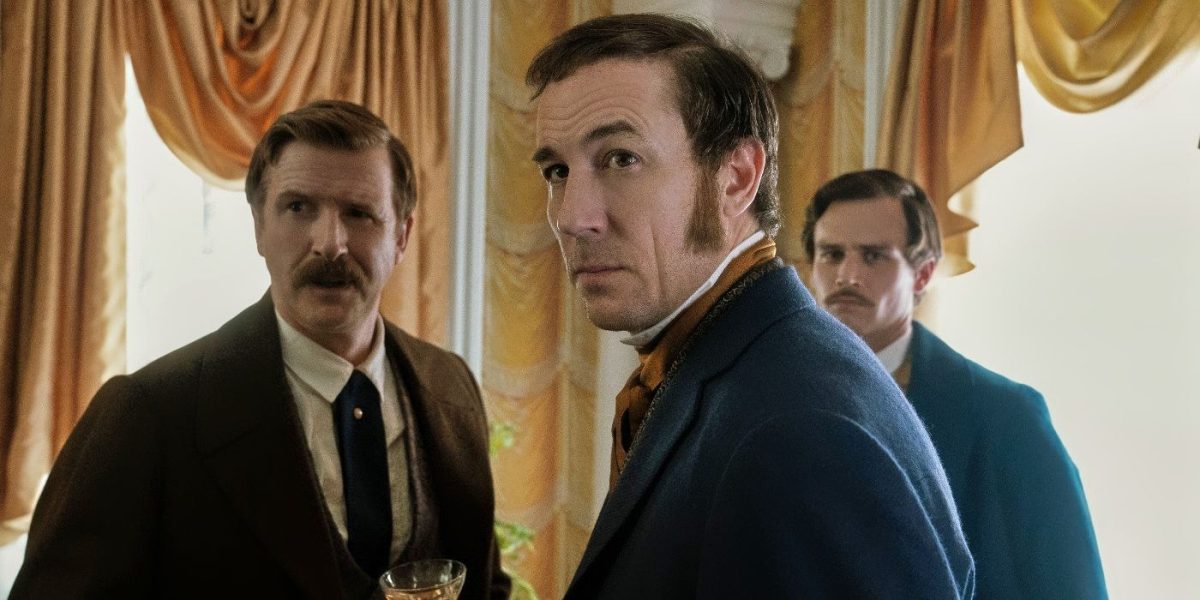
‘Manhunt’s Showrunner Breaks Down the Finale’s Biggest Moments
Apr 27, 2024
Editor’s note: The below interview contains spoilers for the Manhunt finale.
The Big Picture
Apple TV+’s
Manhunt
shifts more towards the style of a courtroom drama in the finale due to the emotional intensity of Booth’s death and the conspirators’ trial needing two separate episodes.
The key plot centers around the friendship between Edwin Stanton and Abraham Lincoln, two men who were devoted to upholding justice.
Showrunner Monica Beletsky explains how the show’s flashbacks are used to provide context and insight into the characters’ pasts, enhancing the narrative.
The finale of Apple TV+’s Manhunt almost feels like a very different show. After the lengthy pursuit of John Wilkes Booth (Anthony Boyle) culminates in his rather unceremonious (and, in his words, “useless”) demise, the series switches gears to follow the trial of those arrested conspirators who each had their part to play in the assassination of President Abraham Lincoln (Hamish Linklater). But justice isn’t necessarily swift, either, and Secretary of War Edwin Stanton (Tobias Menzies) must prove his case, even as he seeks to levy a greater charge of grand conspiracy against Jefferson Davis and the Confederacy for their part in the crime. While the outcome of the trial does provide some closure, “The Final Act” also reveals that the work is far from over when it comes to the progress Stanton and Lincoln were attempting to make through Reconstruction. It would be work, the finale depicts, that Stanton would fight to continue right up until the moment of his death.
In the wake of the finale’s premiere on Apple TV+, Collider had the opportunity to catch up with showrunner Monica Beletsky for a dissection of some of the episode’s biggest moments. Over the course of the interview, which you can read below, Beletsky discusses the purpose of the show’s flashbacks, the intention behind revealing what may have happened to Booth’s diary, and what changed in the development of the finale’s last scenes. She also explains why the manuscript of the conspirators’ trial proved so valuable in the writing process, why Menzies’ Stanton doesn’t have a beard in spite of what the historical record reflects, which story aspects she wasn’t able to fit into the finale, and more.
Manhunt (2024) The aftermath of the first American presidential assassination and the fight to preserve and protect the ideals that were the foundation of Lincoln’s Reconstruction plans.Release Date March 15, 2024 Cast Tobias Menzies , Anthony Boyle , Lovie Simone , Matt Walsh , Brandon Flynn , Betty Gabriel , Will Harrison , Hamish Linklater , Damian O’Hare , Patton Oswalt , Lili Taylor Seasons 1 Creator(s) Monica Beletsky Writers Monica Beletsky Showrunner Monica Beletsky
COLLIDER: I wanted to start with where you chose to end the show, with the trial. It really feels like the show shifts genres a little to be more of a courtroom drama in that way.
MONICA BELETSKY: I, originally, had broken it as one episode, where [Booth]’s death and the trial were in Episode 6. Once I took a look at it, I actually had to call Apple and say, “This is too much. I don’t think, emotionally, we can take on all of this in one hour.” I made an argument for a seventh episode, which, luckily, I got. I hadn’t realized how much the title Manhunt would lead people to believe that the show was the manhunt, and then it’d be over, but having now gone through the process, I understand that. For me, it was never going to end there because we weren’t centering Booth, we were centering Stanton. Stanton’s story doesn’t end when Booth dies. His story continued. It was always, from the beginning of bringing up the idea, in its most basic storytelling, about a man avenging his friend’s death.
In a lot of ways, the show, at the heart of it, is about two exceptional lawyers who are friends, and who have both spent the last few years in the trenches of their office, committed to a belief in upholding the rule of law. I even wrote their scenes with the rhetoric and logic of how lawyers are taught to argue. So it’s sort of inevitable that the show lands in a courtroom — to bring justice to what happened to Lincoln. The obstacle to Stanton’s character is that the evidence is circumstantial and Stanton can’t prosecute the trial himself. He has to delegate, which I set up as a challenge for him since the pilot. He can’t control the outcome, but that doesn’t mean he won’t try. Part of the fun of writing a limited series is that each episode can and should be very distinct. I enjoyed the fact that most of the figures you meet in the show would intertwine and pay off in this final episode.
‘Manhunt’s Flashbacks to the Past Are Always Connected to the Present
Image via Apple TV+
Regarding that friendship, one of the things we talked about last time was all the flashbacks with Lincoln in the show. They’re not necessarily chronological. Through the show, we’re seeing different pockets of time. When did you decide which moments to incorporate in a certain episode? Was it for the purpose of drawing narrative parallels? Was it to highlight certain aspects of Lincoln and Stanton’s friendship?
BELETSKY: I use flashbacks as memories, the way they happen to us in life. Not in a linear narrative, but when a person has an association to a previous situation. This gets us into the mindset of how they’re seeing the context of their situation now. In Episode 4, when the Dahlgren Affair is coming up as a sort of retaliation to try to keep Stanton quiet, and it’s Sanders versus Stanton manipulating the media — that’s when he’s thinking about it coming up with Lincoln and whether or not they should assassinate Jefferson Davis.
In the finale, we start with something that I had come across in reading. I just thought it was so moving that both of these men were grieving their children while also working around the clock for many years together. It occurred to me, as someone who also works like that, that it is a coping mechanism, and it is an avoidance in a lot of ways. Later, I liked the idea that when Stanton is presenting the case at the press conference in front of the trial, he’s thinking about where this all started. “Now I’m here without the guy who gave me the job, and I’m trying to keep his work going.”
Speaking of that conversation we see later in the episode, where Lincoln essentially forbids Stanton from stepping down — because of when it happens, and because we know what comes after based on the timeline, it felt like this was the last sentiment that Lincoln left Stanton with, and so based on that, he can’t ever let the work go.
BELETSKY: Yeah, exactly. My intention there is what you’re saying. That was a real conversation. Lincoln’s dialogue at the end there where he says — I’m paraphrasing it — “You’ve always been more invested in Reconstruction, and Reconstruction is harder than destruction of war. I need you, and I can’t let you resign.” This is the final act, which is the title of the finale. That’s all verbatim, based on notes that were taken. When Stanton’s in that moment trying to decide what to do — “I’m getting replaced by Thomas, Johnson’s kicking me out of this position.” — it was a moment of such major choice. It’s as if he’s hearing Lincoln telling him what to do. “We need you. You have to finish the final act by any means necessary.” That’s why I put it there, as a guide for Stanton’s moral compass and what he’s been tasked to do, and he took it seriously.
Related ‘Manhunt’s Tobias Menzies Explains Why You Have to “Park the Meta” When Working with Abraham Lincoln Menzies also talks about the thrill of working with Julia Louis-Dreyfus on ‘You Hurt My Feelings.’
‘Manhunt’ Addresses a Long-Held Theory About John Wilkes Booth’s Diary
Image via Apple TV+
In terms of a moral compass, this ties into something else that I wantedw to ask about, which is Stanton tearing the pages out of Booth’s diary. Were there actually, historically, pages that were missing? What was the intent behind including that scene? Is it that Stanton’s so committed to seeing this through, and doing the work, that he’s willing to cut those corners?
BELETSKY: It’s funny, I’ve been getting texts from friends and colleagues: “What’s your theory about the diary?” It’s been fun to see people so invested in that. What we know is, on the historical record, Stanton had the diary after the barn, and the pages were intact. He is the last known person to have had them in his possession with all the pages, but then the pages were missing. There’s some debate about whether it was 10 pages or 18 pages; I chose 18 pages. My theory is that it had to do with Lincoln and Stanton, that they were planning an assassination of Davis, and that perhaps Booth had written some pages about how that failed attempt angered them and also gave them leeway to say, “We could do that to them.” It would be damning to Stanton, because he wouldn’t want to have been an inciting incident to have caused the assassination of Lincoln.
Other people have really wild theories that I think are absolutely unfounded, like saying that he ripped them out because he had something to do with planning the assassination, which just seems so preposterous. Based on Stanton’s behavior, I don’t see how you can justify that theory, and I’m sure it’s been debunked. Anyway, that’s my guess, but we’ll never know. I decided to put it in there, even though we can’t prove he’s the one who took them out. I thought that it was a good thing to include, and then I left it ambiguous like it is in real life, because we don’t know what the pages said.
To the second part of your question, I wanted to show, in a few ways, how Stanton’s moral compass changed as he got into the trial. There’s that scene where he’s telling Eckert that people don’t really understand code, and how all of their evidence is circumstantial. What do you do, then, when you really want to win? What I have Stanton arguing there is, “Look at how much they’ve gone outside of the playbook. They literally tried to topple us. It’s not that far of a stretch when you look at what they’re willing to do to us.”
A lot of those incidents are true, like him wanting the code to be more damning than it was, and then saying that Jefferson Davis was found in a dress when he was found in a shawl. And of course, the diary pages, and also paying Sanford Conover to testify, which I had to look up, because apparently, you could actually pay witnesses to show up and be on your side. I liked it, and I liked it for Tobias, and I think Tobias liked it as well because it just gave the character more layers and showed how badly he wanted to bring these people down. He did truly believe that it was a grand conspiracy, and, unfortunately, he just didn’t have all the evidence.
In terms of the grand conspiracy charges that were leveraged against Davis and the Confederacy as part of that trial, there’s such an overhanging debate about the extent to which they were involved. Some modern researchers seem to really argue that there was a greater conspiracy. Obviously, you’re telling this story from a perspective that was limited by time and evidence, but in your research, how far did you go down the rabbit hole of looking all of this up?
BELETSKY: I came into the project thinking that Booth was a lone wolf villain, sort of how the majority of us, I think, are taught in school. A major obstacle to us, collectively as a culture, knowing this story, is because a lot of it is in the trial transcript, and it’s about a 1,000-page document. It can be found on the Library of Congress website and other places. It’s readily available in the public domain, but it’s 1,000 pages, and it’s small print. I think people haven’t really looked at it in general. So much of the show I got from that trial transcript. Even the stuff about Dr. Mudd. [Laughs] I say he’s had the best publicity for almost 200 years. If you actually look at what witnesses say he did in the trial, there’s really no way you could have justified him all these years. I think people just haven’t taken the time in general, outside of academia, to look at it. Honestly, I didn’t do a huge deep dive, but the trial transcript alone has so much material in it that it was super useful.
One of the things that really struck me was how many people they had testifying against Mary [Simms], specifically. There were almost 400 witnesses in the trial, it was over several months — but several of them were there just to take down her character. To me, it was really compelling, how much they must have been threatened by her [and] to have taken the time to have so many people try to invalidate her.
Monica Beletsky Explains Why Tobias Menzies’ Stanton Doesn’t Have a Beard in ‘Manhunt’
Image via Apple TV+
While the show was airing, I remember seeing some claims that there were certain idioms that characters were saying in the show that seemed too modern and contemporary. How many of those phrases did you go back and look up to verify in terms of when they were first coined?
BELETSKY: I looked every single thing up, and I had my scriptwriter, Julianna [Meagher], look etymology up. My go-to with this was — and I wish I had some way to present this upfront because it did cause a lot of agita with people, and I wish people understood my intentions a little more in the beginning — I really wanted the audience to be engaged in this story as if it were happening, as if they were in it. So I didn’t want anything in it that was going to be really distancing. A lot of period dramas can have language or costumes or hairstyles that make you feel like you’re watching something in a museum. At the time this was happening, it was very modern, and I wanted people who aren’t necessarily history buffs to be engaged in the show and feel a visceral connection to it.
One of the things that comes up a lot, of course, is that Tobias and I didn’t go with a beard for Stanton. I didn’t want people looking at this scraggly beard on Tobias’ face for seven hours — I just didn’t — and he felt the same way. Beards were actually a really modern fashion at that time, and Lincoln had a lot to do with that — because of his beard. A lot of men were growing beards in the Civil War because they would get tetanus or gangrene from razor blades that weren’t clean. What a beard signaled then is not what a beard necessarily signals now, and we wanted Stanton to be a man ahead of his time. He’s a modern thinker, and that felt right to us. It’s not some guy in a Santa Claus beard, because that would feel like he’s an old fuddy-duddy, which wasn’t the spirit of what we were going for.
Same thing with the language. There’s just something more visceral about the language choices sometimes, where it just felt like it would be more relatable. I looked up the words, if the words existed at the time, and if it was plausible to me that they would say it, and if it was in the realm of plausibility… I also felt that this was a time, pre-screen entertainment, where wit was an incredibly powerful tool that people used in everyday conversation. So, for example, Mary Lincoln says, “You were his war wife,” and people were like, “Would she really say that?” I don’t know! But she’s clever, and these people are witty. They were reading Shakespeare every day. Why couldn’t she have said that? For some people, that’s not their taste, but that’s what I wanted to do, and so that’s how we did it.
Talking about the effort to be visceral and relatable, there are times when the show bears an uncanny and sometimes uncomfortable resemblance to our present in terms of political and social tensions. How conscious were you of that while you were working on this, and how often did you try to navigate between acknowledging those parallels and not leaning too heavily on them?
BELETSKY: There are obviously a couple of lines that were controversial, but I started writing the pilot in 2020. It was four years ago, and for me to have predicted what would have happened in the country from then to now, it was impossible, right? The show is so topical that it continues to be more relevant the more years we worked on it. To me, it just confirmed that it was the right story to tell now, and that it was an important story to tell now.
The more I looked at it in terms of Booth’s action, it was so different to murder someone in a public space versus what they had been doing, which is, “Hey, gentlemen, let’s meet on a hill at this time.” We can’t really underestimate how huge a shift in the culture that was. I think that that is still a part of our culture, unfortunately, but this moment was one of those times that really sealed that kind of violence into our culture, unfortunately. I thought that that was something to look at, which I did bring up in the reporter and Conover’s scenes with Stanton in the pilot. I was aware of that, but the other stuff that became relevant, I could not have predicted that.
Monica Beletsky Reveals What Changed About ‘Manhunt’s Ending
Image via Apple TV+
At the end of the episode, Stanton barricades himself in his office, but there’s also a timeskip ahead to the end of his life. Were those your initial plans for how you wanted to end the show?
BELETSKY: I was always going to end with him getting the Supreme Court nomination, but before that, I had written scenes where Seward and his wife came to the door and brought him food while he was barricaded, and they were telling him updates of what was going on with the impeachment trial with Johnson. It bled more into Johnson’s impeachment and Stanton getting out of the barricade, and all of that. Between having seven episodes and also just feeling like… there was just a day when I could just see it visually, him barricading the door with the desk, and I felt like, emotionally, that was the end of his story until the coda. The ancillary stuff felt like a whole other story that we did not need to get into or could not get into, in terms of playing out the whole impeachment from behind the door.
You’ve already touched on this, how it’s meant to be Stanton’s story, so it feels very fitting then to conclude the story with him passing away, on the precipice of almost being able to achieve more, and not really being able to see a lot of those amendments come to fruition.
BELETSKY: I’m not a super literal person, so for me, the manhunt, yes, ended literally at the barn, but there are still other men to hunt down, right? That’s why he’s still pursuing all these people at the trial, and also trying to get into law things that would prevent this from ever happening again, which the 14th Amendment is partly designed for. All of that, including him getting nominated to the Supreme Court, is along that narrative thread of, had he been able to sit on the Supreme Court, it probably would be a different country today. He would’ve probably been able to cause consequences that were not ever made.
I wasn’t able to fit in a few things in the finale. Johnson actually pardoned Dr. Mudd a few years later, so he didn’t have to do the hard labor for his whole life. That’s another place where Johnson got in the way of justice. Another thing that really struck me that I thought was so moving is that Stanton and Lincoln were talking about bringing Black children and white children together in schools as a part of Reconstruction. Their plan was going to be the integration of schools in 1865, which is exactly 100 years before Brown v. Board of Education. We would have had 100 years of that in our society before we actually did. That really moved and shocked me, that they were that ahead of their time, and how much we really lost when Lincoln was assassinated.
Manhunt is available to stream on Apple TV+ in the U.S.
Watch on Apple TV+
Publisher: Source link
Everyone Is Poking Fun At Travis Kelce's Kentucky Derby Outfit, And The Jokes Are Very, Very Funny
It's giving Mister Peanut to me.View Entire Post › Disclaimer: This story is auto-aggregated by a computer program and has not been created or edited by filmibee.Publisher: Source link
May 8, 2024
Keep Up With Kendall Jenner’s 2 Jaw-Dropping Met Gala After-Party Look
Later on, the 28-year-old swapped out her Vivienne Westwood number for a white Givenchy by Alexander McQueen spring/summer 1997 outfit. The look was angelic, quite literally featuring angel wings on its bust. The outfit, comprised of a Haute Couture leather…
May 8, 2024
Isabela Merced On Turtles All The Way Down, The Last Of Us
3. What is your favorite book-to-movie or book-to-TV adaptation? Honestly, most recently, Poor Things. The book is incredible. And, like, reading that before you watch the movie is very, very helpful and insightful.Emma Stone's performance and just the visual design…
May 7, 2024
Why Kim Kardashian’s 2024 Met Gala Sweater Has the Internet Divided
The internet is sweating over Kim Kardashian's 2024 Met Gala look. As stars descended upon New York City's Metropolitan Museum of Art May 6 dressed in glamorous attire, the Kardashians star raised eyebrows with an unsuspecting accessory. In addition to her custom Maison…
May 7, 2024
